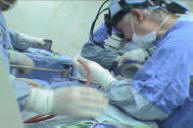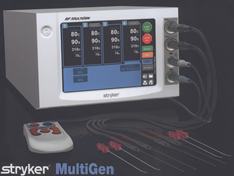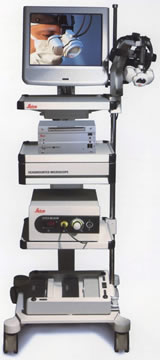|
Alzheimer’s disease (AD) is the most common cause
of dementia. Several million people worldwide are
afflicted by the disease, and the number of individuals
affected is expected to grow with the increasing life
expectancy. Generally, it is diagnosed in people
over 65 years of age, although the less-prevalent
early-onset AD can occur much earlier.
It consist 65% of all demented patients. The first symptoms of the disease are often mistaken as
related to aging or stress. At this stage,
neuropsychological testing can reveal mild cognitive
impairment (MCI). These early symptoms can
have an effect on the most complex daily living
activities. The most noticeable deficits observed at this
stage are memory loss (short-term memory loss),
problems with executive functions, and apathy. In
patients with AD, the increasing impairment of learning
and memory will lead to a definitive diagnosis.
Subsequently, language problems and apraxia will
appear. At this stage, AD patients can still perform
tasks independently, but may need assistance or
supervision
with the most complicated activities. As the
disease progresses further, progressive deterioration
hinders independence. Reading and writing skills are
progressively lost, urinary incontinence can develop,
motor and memory problems worsen, and behavioral
changes become evident. During the latest stage of
AD, the patient is completely dependent upon caregivers,
language is reduced to simple phrases or single
words, and mobility deteriorates to the point where
the patient is bedridden. Death occurs from
complications
such as pressure ulcers and pneumonia, and not
from the disease itself.
The brains of individuals with AD are characterized
by the presence of abundant neurofibrillary tangles
(pathological protein aggregates found within
neurons) and neuritic plaques (deposits of the
betaamyloid
in the extracellular spaces). These deposits
ultimately cause neuron disintegration, collapsing the
neuron’s transport system. Although many individuals
develop some plaques and tangles as a consequence
of aging, the brains of AD patients usually have
a greater number of them in specific brain regions
such as the limbic system and temporal neocortex,
with a tendency to spread to other brain regions as
the disease progresses. However, typically this
pathology manifests as clinical AD only after a certain
quantitative threshold is reached, and by the time the
individual is diagnosed with AD, a significant loss of
synapses and neurons has already occurred. In agreement with pathologic findings, most MRI
studies have reported global or focal signs of brain
atrophy in the brains of AD patients. Gray-matter
atrophy was consistently found in the frontal, temporal,
and parietal lobes and limbic system of patients
with AD, presumably reflecting neuron loss in these
regions. In this context, accurate volumetric
measures
of regional brain volumes on MRI images have
demonstrated to support diagnostic decision-making
and differential diagnosis. This is
particularly
useful for detection of cerebral changes in MCI,
as these are usually too subtle to be detected by visual
inspection of MRI scans alone. Compared with elderly
controls, patients with MCI seem to have significant
hippocampal and entorhinal cortex volume losses.
However, as expected, gray matter volume loss is in
general less severe and diffuse in MCI than in
clinically evident AD patients.
1H-MRSpectroscopy
Large decreases in brain NAA have been observed
since the earliest proton MRS and MR spectroscopic
imaging (MRSI) studies of AD patients. Reduction
of NAA concentration, or the ratio of NAA to other
metabolites such as Cr, has been consistently found in
the mesial temporal lobe, posterior cingulate gyrus,
parietotemporal region, frontal lobe, occipital lobe,
and hippocampus. These
NAA decreases are much less evident in the white
matter, probably due to the fact that AD affects the
cortical regions primarily. Measurements that
account for atrophy in acquired voxels show that the
decreases in NAA are independent of CSF content. NAA is a sensitive marker for neuronal
density
or viability, but its loss is certainly not specific
for AD. However, it is interesting to note that
decreases
in NAA seem more pronounced in anatomic locations
that show higher severity of neuropathologic findings
(e.g. amyloid plaques and neurofibrillary tangles) on
postmortem studies. This suggests that in AD
patients, brain NAA changes do correlate with neuronal
loss or dysfunction in patients with AD.
Proton MRS studies have reported conflicting
results on choline (Cho) metabolite levels in brains
of AD patients, with increases, no changes or decreases
of this metabolite in different brain locations.
In
contrast, increases in myo-inositol (mI) have
consistently
been reported in several anatomic locations of
brains of AD patients, with again an effect more
pronounced
in gray matter (e.g. mesial temporal lobe,
anterior and posterior cingulate gyrus, and parietal
lobe) than in white matter. As most of the mI in the
brain is present in glial cells, it
is likely that persistent elevation of mI levels
reflects
microglial proliferation in AD. In patients with MCI,
brain regional levels of mI are often increased without a
large decrease in NAA, suggesting that MRS may be
sensitive to the biochemical changes in the pathological
progression of prodromal AD even before there is
a significant loss of neuronal integrity.
Owing to the consistent coexistence of high mI and
low NAA brain levels in patients with AD, the ratio of
NAA/mI has been proposed by several authors as the
most accurate 1H-MRS measurement in this disease. Whereas the clinical specificity of the
NAA decline in AD is poor, the addition of mI
information
increases accuracy. Thus, the NAA/mI ratio is
able to distinguish clinically diagnosed patients with
AD from normal elderly people, with good sensitivity
and specificity. For the more challenging task of
discriminating AD cases from other possible dementia
diagnoses, the NAA/mI ratio can still be useful.
Whereas NAA levels are almost constantly decreased
in the different dementia types, levels of mI are
elevated predominantly in dementias that are
pathologically
characterized by gliosis, such as AD. Thus,
higher levels of NAA/mI are expected in patients with,
for example, vascular dementia or in dementia with Lewy
bodies where gliosis is little or absent.
Furthermore, in patients with AD, neuropsychological
measures of cognitive function may correlate with
levels of the NAA/mI ratio, with region-specific
association
between neuropsychological performance and
MRS metabolite changes depending on the cognitive
domain being studied. The intriguing suggestion
that 1H-MRS may have a useful role in prognosis
of mental function and tracking of disease progression
seems to be confirmed by the close correlation recently
reported between antemortem metabolite changes
found on 1H-MRS examination and AD-type pathology
subsequently seen in the same brains at autopsy
(e.g. strong association of NAA/mI and Braak stage,
a histopathological estimate of extent of
neurofibrillary tangle involvement).
Despite its potential to monitor the temporal evolution
of metabolite changes, longitudinal 1H-MRS
studies are uncommon. There may
be several reasons for this, including technical
difficulties.
For example, it is technically demanding to
obtain reproducible measurements from the anteromedial
temporal lobe (a region which is known to be
affected earlier and more severely than any other
brain regions in AD patients), as this brain region
is in proximity to the tissue–air interface near the
petrous bone and, consequently, difficult to achieve
a homogenous magnetic field and an optimal water
suppression within that VOI. In addition, the ~ 8 cm3
voxel size generally used to obtain the sufficient
SNR is much larger than the volume of the cortical
gray matter structures, with the consequent lack
in the anatomic specificity of the measurements.
Since short TE (30–35 ms) 1H-MRSI acquisition
has become easier to use and routinely available on
clinical MR systems, this should be the preferred
method for quantification of spectroscopic metabolites
in AD brains. Furthermore, more sophisticated
postprocessing
using segmented MRIs to calculate percentages
of gray and white matter in each 1H-MRSI voxel
can allow estimation of “pure” cortical changes,
improving the reliability of the spectroscopic measure.
Alternatively, short TE single voxel (usually 8 cm3
size)
1H-MRS acquisitions from the posterior cingulate
region and mesial occipitoparietal cortex provide good
quality data and seem to show changes specific enough to
AD. Familial
Alzheimer’s disease
Familial Alzheimer’s disease (FAD) accounts for only 5%
of cases, but has provided invaluable insights into the
pathogenesis of sporadic disease. All forms show
autosomal dominant inheritance with a high degree of
penetrance. Presentation is usually below the age of 65
and the term early-onset Alzheimer’s disease is
therefore used. Most cases of familial Alzheimer’s
disease are due to mutations in one of the three main
genes involved in amyloid processing:
■ APP, on chromosome 21, which encodes amyloid precursor
protein.
■ PSEN1, on chromosome 14, which encodes presenilin-1
(PS-1).
■ PSEN2, on chromosome 1, which encodes presenilin-2
(PS-2).
Mutations in the genes for PS-1 or PS-2 account for
nearly half of familial Alzheimer’s disease cases. There
is usually increased Aβ production, with alteration of
the Aβ40:Aβ42 ratio, so that more of the plaque-forming
Aβ42 species is produced. In many FAD families with
known mutations in the APP gene, the region of the
protein flanking the amyloid beta sequence is affected,
which is also
associated with increased Aβ42 production. This is in
contrast to mutations affecting the central portion of
the amyloid sequence, which are more likely to cause
cerebral amyloid angiopathy. Finally, it must be stressed that the diagnosis of
AD as well as other forms of dementia is difficult and
relies mainly on clinical information. Quantitative MR techniques are not
recommended
for routine use of dementia evaluation at
this time because superiority to clinical criteria has
not
been demonstrated. However, the early diagnosis
of AD using a combination of quantitative MR
methodologies, including 1H-MRSI, seems possible in
the near future. |







